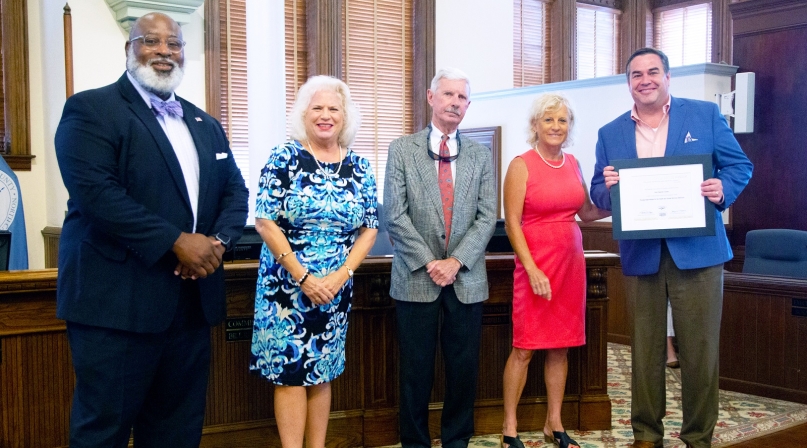Problem:
|
Vital documents sometimes took two to three days to send to residents, from the county health and human services department, causing headaches and interruptions in service. |
Solution:
|
Restructure the process, making submitting and handling mail far easier and giving much needed flexibility to staff. |
For New Hanover County, N.C., excellence comes through hard work and being proactive.
“Sometimes it’s hard to be proactive,” said Chief Strategy Officer Jennifer Rigby. “As a county or government official, you’re just kind of fighting fires and you’re in a very reactive state. The more you can put yourself in a proactive state the better you will end up serving customers, the better you will support your team and your staff.”
Five years ago, the county launched the Office of Strategy and Budget, which focuses on systems review and improvements to achieve the goals and vision set forth by the county commissioners. In 2019, the budget portion moved to the finance department, which freed up space to hire two additional employees to the Office of Strategy. As part of the new team, JD Limberger was hired as the senior strategist and process improvement analyst, playing a vital role in reshaping how the county functions in large and small ways.
In 2019, Limberger identified potential improvements in the county health and human services department’s mail system, both in reshaping the mail room space and altering how the process functions. With help from Regina James-Boston, Health and Human Services assistant director of Centralized Services, they created a plan to implement changes on an ambitious 30-day timeline.
Learn more
The New Hanover County Mailroom Process Improvement program is the recipient of a Best in Category 2021 NACo Achievement Award in the County Administration category.
Limberger identified gaps within the mail-sorting process: High traffic within the mail room, limited space for sorting, junk mail processing and delivery time. Prior to the change, mail was sorted into bins and then employees would come to the room and fetch their mail whenever they found the time. The inconsistency led sometimes to two- or three-day delivery times for critical mail pertaining to HIPAA, Medicaid cards and more.
“When you’re doing an application for food and nutrition or an application for Medicaid, there’s all kinds of time guidelines and so things have to be addressed within a 24-hour period or a two-day period,” he said. “By changing the direction of how we were doing this, it really made a big difference to our customers.”
Limberger made several recommendations to improve the process: Additional nearby office space was added to the mail room to make sorting far easier; the mail room staff took over delivery of mail which reduced traffic around sensitive information and vastly improved delivery time from days to hours and they modified the sorting process to remove junk mail from circulation. This improved response time to residents who less frequently missed important deadlines, reducing the traffic for reapplications. The changes also helped reduce strain on other departments. Return mail was previously sent to supervisors to sort out; now it is quickly handled and resent to the correct address.
Boston and her team took Limberger’s recommendations and continued to review their work. The team implemented an outdoor roadside drop box, further reducing traffic inside the building. This gave residents a better experience as they no longer had to wait in line and go through security to drop off mail. Within a short time, 15 percent of all traffic came through the drop box, with the county identifying 444 residents using the box in seven days. In 2020, 4,655 documents came through the drop box, 2,955 in 2021.
“It’s an ongoing process,” said Boston. “We need to continually evaluate and reevaluate and make it better so that we can provide good customer service to our external and our internal customers as well because the internal customers are the ones who make sure our external customers get the things they need.”
The recommendations were made and continued. “The sustainability is a lot of times out of my control,” he said. “We can identify problems, we can fix the problems, but here’s the thing at the end of the day… I can’t really maintain those changes.”
“I came back a year later and I did a walk-through of that department, and I was blown away that not only had they sustained all the changes, but that they grew,” he said.



